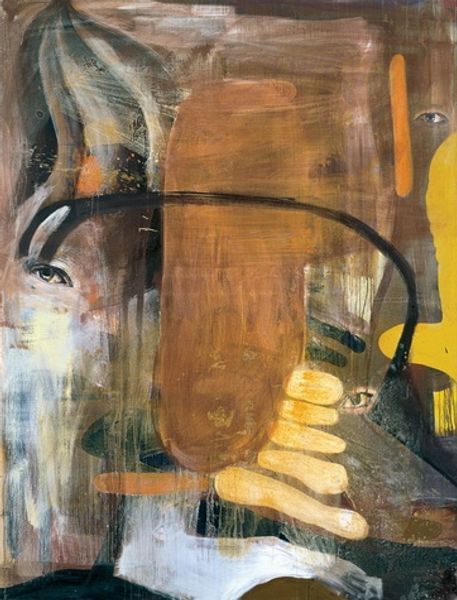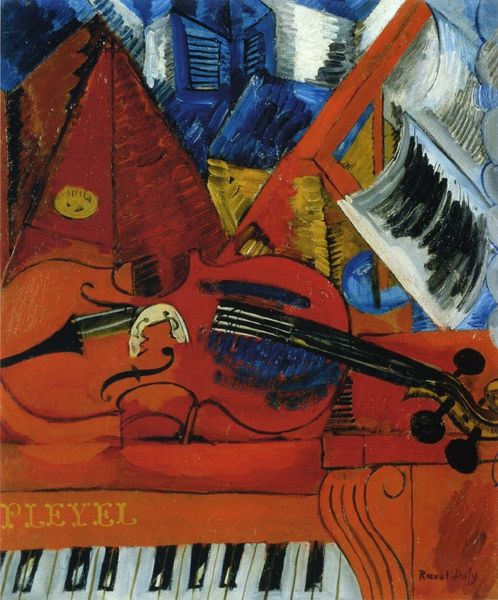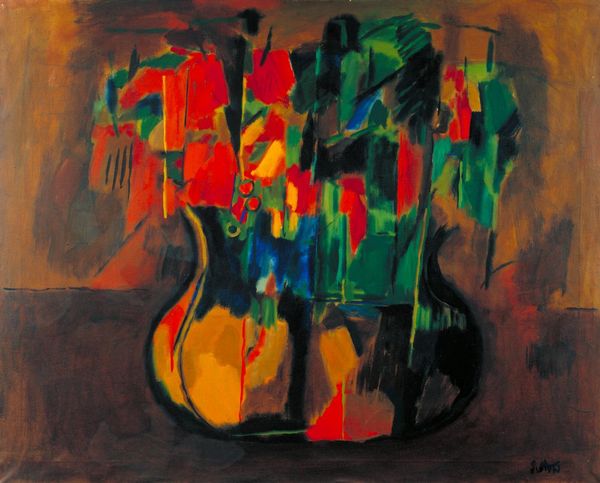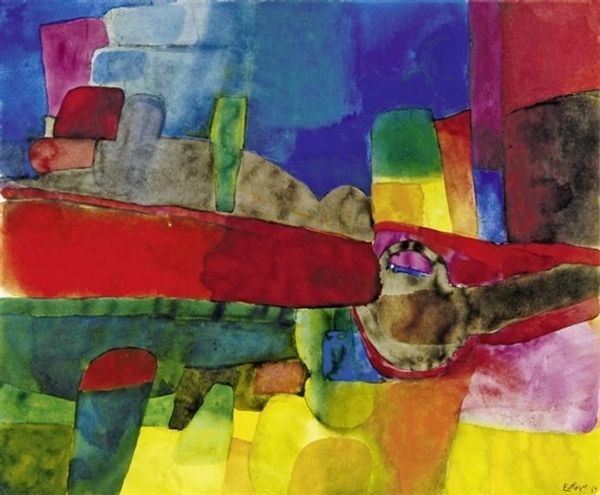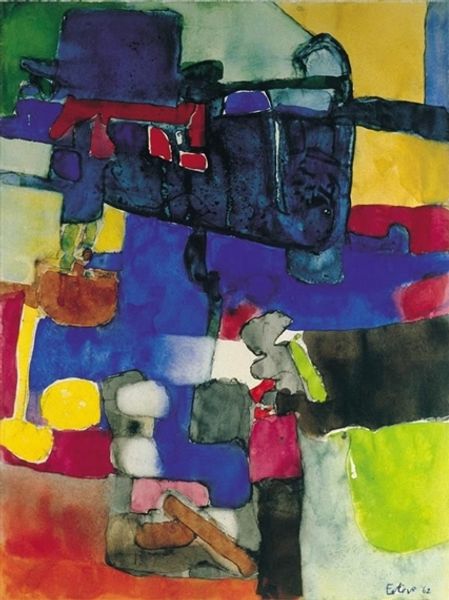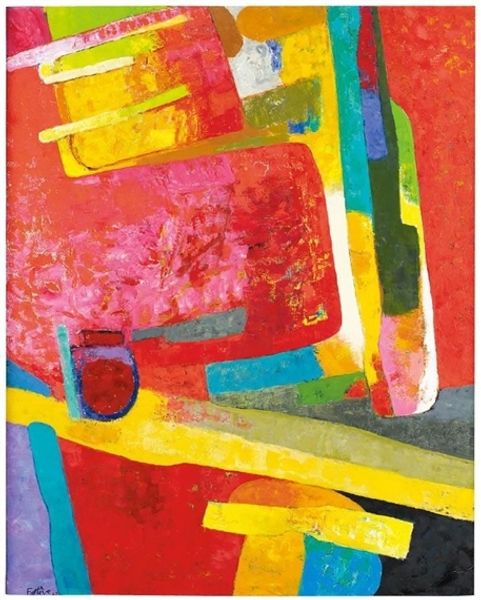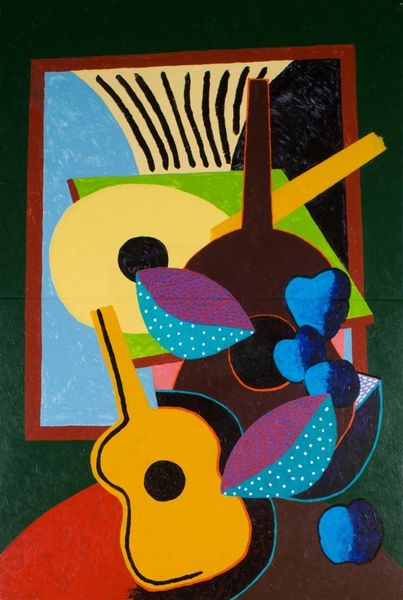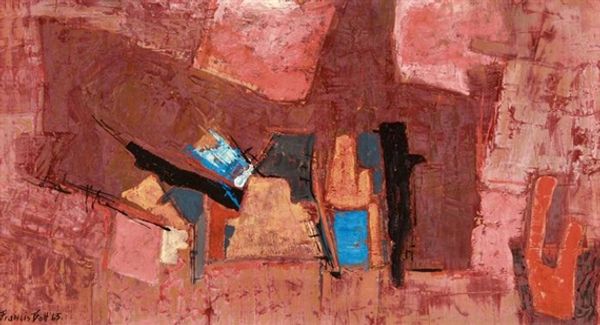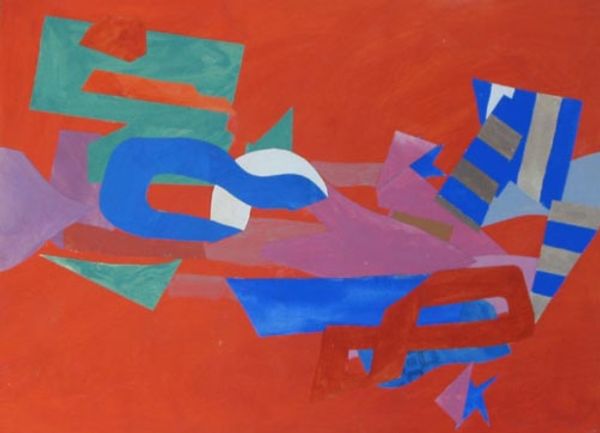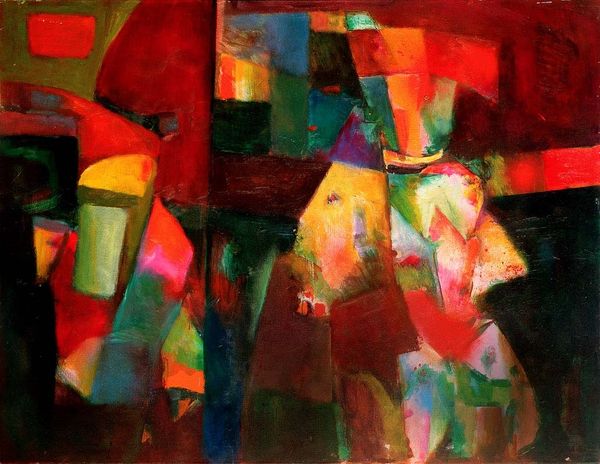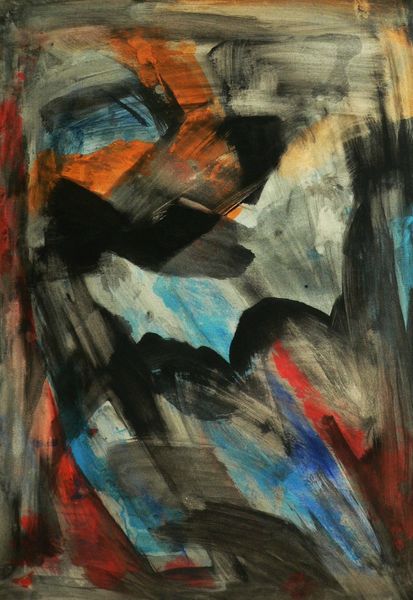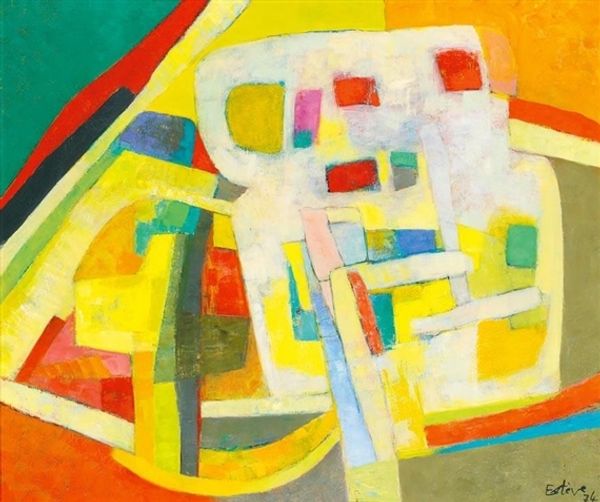
painting, oil-paint, impasto
#
portrait
#
painting
#
oil-paint
#
asian-art
#
figuration
#
oil painting
#
impasto
#
painting art
#
modernism
Copyright: M.F. Husain,Fair Use
M.F. Husain made this vibrant, untitled painting of a veena player, likely sometime in the late 20th century. It uses bold colors and fragmented forms to evoke the rich cultural traditions of India. Husain was a major figure in post-colonial Indian art, and he often drew upon Hindu mythology, rural life, and national symbols. Here, the veena, a classical Indian instrument, and the peacock, India's national bird, suggest an idealized vision of Indian heritage. Yet, Husain's modernist style, with its flattened perspective and geometric shapes, departs from academic realism. This fusion of tradition and modernity reflects the complex identity of India after independence. Understanding this painting requires examining the social and political context in which it was created. What role did art play in shaping a new national identity? How did artists like Husain negotiate between local traditions and global modernism? To answer these questions, scholars consult a range of sources, including exhibition catalogs, artist interviews, and critical essays. By situating art within its historical moment, we can better understand its enduring power.
Comments
No comments
Be the first to comment and join the conversation on the ultimate creative platform.

